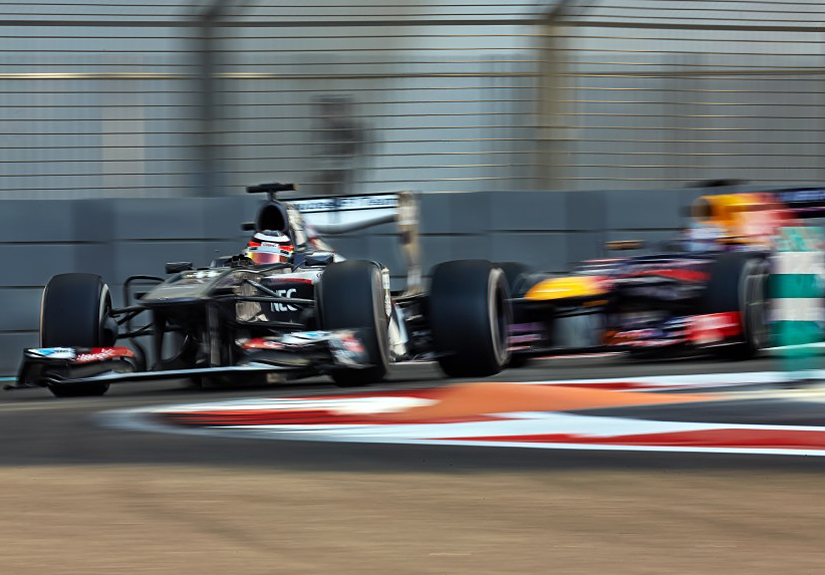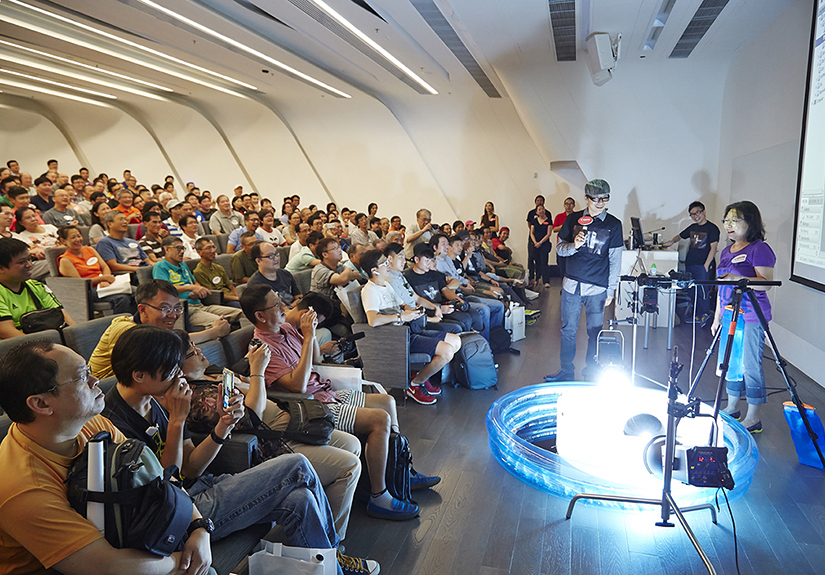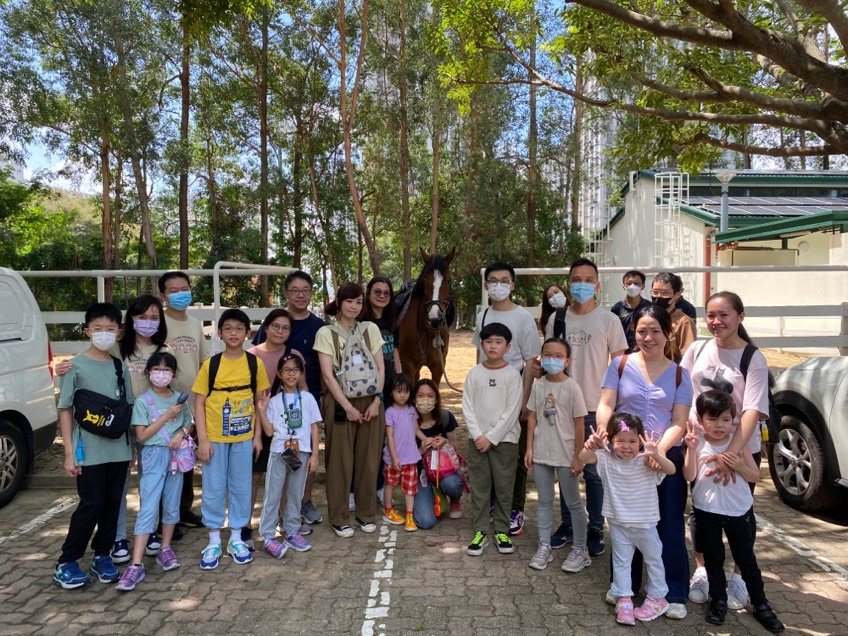Event Highlights from
Canon “FOR EXPERT • BY EXPERT” Presents
“Hunt in the City” EOS 7D Mark II Photo Exhibition and Seminar

Last year, Canon Hongkong’s “FOR EXPERT.BY EXPERT” program spotlighted themes of “Wildlife Photography” and “High-Speed Photography” and launched a series of photo exhibitions and seminars featuring professional photographers of different genres, which have received overwhelming responses from photo enthusiasts. Stepping into the new year of 2015, Canon Hongkong joined hands with renowned nature photographers John Holmes and Samson So to create a photo collection in the theme of “Hunt in the City”, capturing black kites spreading their wings above the urban environment using the latest EOS 7D Mark II, EF 100-400mm f/4.5-5.6L IS II USM and EF 400mm f/4 DO IS II USM super telephoto zoom lenses. In addition to the photo exhibition held from February 2 to 8, both photographers also shared their expertise in bird photography and spread the message of natural conservation with participants during the 7 sessions of seminars held from February 6 to 8.

Both photographers have over 20 years of experience in bird photography. Their photos captured the distinctive sight of black kites flying above the urban environment in Hong Kong.

Although it seems easy to spot a black kite in the city, both photographers mentioned that finding a good location to shoot was the real challenge.

Participants were enthused about trying out the EOS 7D Mark II paired with different super telephoto EF lenses.

Samson So (middle) and John Holmes (right) shared their knowledge and expertise in photographing black kites with participants.
Samson So: Create Greater Impressions through Photos
Samson So, founder and director of the Eco Institute, has been working on personnel training in nature reserve areas, conducting ecological field trips and promoting environmental education since the 1990s. Observing and photographing birds have been his major areas of study. “There are a great variety of gestures of birds. The number of birds and their behaviors can help us observe environmental changes. That’s why bird observation has always been one of the indicators to monitor nature. Raptors like black kites are especially good observation subjects.” In the past, bird observers mainly used telescopes to observe. But nowadays, digital photography has become one of the useful tools. In Samson’s opinion, digital photography in the modern days can help provide greater impressions and useful details. He explained by showing the participants a photo of a foraging black kite, “What color is the bird’s eye? This is hard to find out through a naked eye or telescope. In fact, black kite has 3 sets of eyelids, and the transparent set will descend and protect the eyes when the bird is flying in high speed. It is only through digital photography that we can observe such details.”

Apart from shooting technique, Samson also shared information of the nature such as the biological structure of a black kite.
High-Speed Shutter to Freeze an Action
To turn a photographic tool into an observation tool, we have to know well about the equipment. During the seminars, Samson shared very extensive details about his shooting with the participants. All exhibits were taken with the EOS 7D Mark II, and Samson stressed the importance of “high-speed shutter to freeze the swift movement of black kites”. Regarding the camera setting, in general the 10fps continuous shooting is used, together with one-point AF, AI Servo and iTR focus tracking. Shutter speed is set to 1/1000s or even faster at 1/4000s.
Zoom Lens for Flexible Composition
For lens choice, Samson recommended the super telephoto zoom lens EF 100-400mm f/4.5-5.6L IS II USM. He explained, “Many people have a perception that the prime lens offers better image quality, but in my opinion, how you use a lens is more important. Many of the exhibits were taken with the EF 100-400mm f/4.5-5.6L IS II USM. As we are not taking only feature shots of the birds, the zoom lens can offer us the flexibility to capture the wider scene or environment for more varieties. With the EF 100-400mm f/4.5-5.6L IS II USM, we can take photos that capture a wider range of landscape at its wide end.”
Expanded Imaging Possibilities with High ISO
Samson was also very impressed with the high ISO capability of digital photography. For example, the EOS 7D Mark II offers a standard ISO range from ISO 100-16000 and is expandable to ISO 51200. In the past, we were all aware of the image noise that comes with high ISO like 3200 or above. Nowadays, even with ISO 6400, the graininess of the image is still acceptable. One of the exhibits taken by Samson was taken in the nighttime. This photo, with both the moon and black kite looking sharp with a background of trees and buildings, is one of Samson’s favorite. “I have this image in mind many years ago. To capture the details of the moon and at the same time freeze the bird’s action, the shutter speed cannot be too slow. Therefore we must shoot with a high ISO setting. This photo would not be possible without the improved ISO capability of digital photography in recent years.”

Samson Samson shared his views and shooting tips with participants, mentioning that both high ISO setting and high-speed shutter were extremely useful in bird photography.
John Holmes: Explore and Learn for the Sake of Photography
John Holmes, another participating photographer in this project, has over 20 years of experience in bird watching and bird photography. Over the years, he has contributed bird records and photographs to bird interest groups and environmental organizations such as the Hong Kong Bird Watching Society, World Wide Fund For Nature Hong Kong, the Conservancy Association and the Oriental Bird Club. In preparation for “Hunt in the City” photo exhibition, he visited places that he hasn’t been to before in search of black kites in the city. “Although black kites seem to be everywhere, I searched around places like Tsing Yi, Sai Kung and other locations that I haven’t been to before in order to find a shooting location that fits in with the “City” theme. I eventually found that Ap Lei Chau in Aberdeen was probably the best place to shoot. To me, the shooting this time gave me a chance to explore and learn.”
Make Good Use of Sunlight
John and Samson shared a similar view in terms of shooting technique. Apart from using the EOS 7D Mark II’s iTR focus tracking and high-speed continuous shooting to capture the movement of black kites, John also paid great attention to lighting, and a secret to the success of his shooting is making good use of sunlight. “We were very lucky to have good sunlight during the shooting. With sunlight as the main light source, the features of the birds can be shown clearly. One of the reasons to shoot in Ap Lei Chau in Aberdeen is that the afternoon sun in winter is more in the north direction. When we took pictures towards the south shore, the birds had a nice and direct sunlight on them. If light is insufficient, reflective light from the water surface or fa?ade of building can help. A bird flying slanted will have more light-receiving surfaces, making a more sharp-looking subject.” Besides, John preferred to use manual exposure as this can prevent having problems in exposure as the bird was in flight on a changing background.

In John’s opinion, the iTR (Intelligent Tracking and Recognition) AF function of the EOS 7D Mark II could hold the focus accurately, giving you a higher chance for a successful shot.
Non-Full-Frame Camera can be more Practical
As full-frame cameras have a higher market positioning than APS-C cameras, many people have a perception that having a smaller sensor size is a shortcoming of the EOS 7D Mark II. However, John had a contrasting view. He believed that the 1.6x crop factor of the camera can be of great use to bird photography. “With the 1.6x crop factor on the EOS 7D Mark II and 400mm lens, you will be given a focal length equivalent to more than 600mm. If you use a 1.4x extender in combination, the equivalent focal length will be close to 900mm.” That will give you a lot of reach and flexibility with your bird photography.
To both Samson and John, their love of nature always come first than shooting. Through this “Hunt in the City” photo exhibition, they wanted to spread the message of promoting natural conservation. John said, “I hope everyone will be able to enjoy the nature, respect and admire this rare scenery of black kites in the city.” Samson concluded, “From the view of ecology, black kites play the roles of both predators and scavengers, and it is not easy for them to live. I want to capture this story with photos exhibited in this “Hunt in the City” exhibition.”
To both Samson and John, their love of nature always come first than shooting. Through this “Hunt in the City” photo exhibition, they wanted to spread the message of promoting natural conservation. John said, “I hope everyone will be able to enjoy the nature, respect and admire this rare scenery of black kites in the city.” Samson concluded, “From the view of ecology, black kites play the roles of both predators and scavengers, and it is not easy for them to live. I want to capture this story with photos exhibited in this “Hunt in the City” exhibition.”





